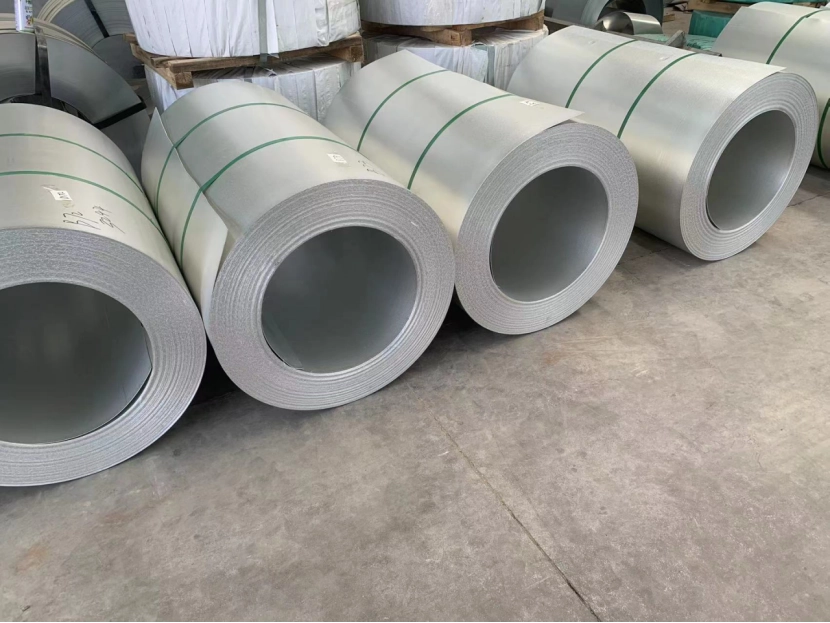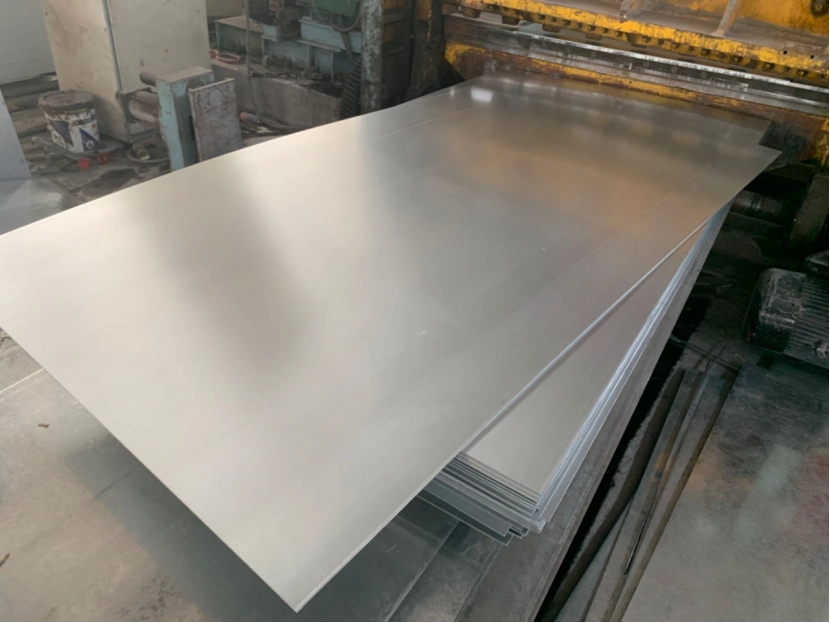Understanding Galvanized Sheet in Construction
What Is a Galvanized Sheet?
A galvanized sheet is a kind of steel item covered with a thin coat of zinc to shield it from rust and wear. This protective layer is often added through a process called hot-dip galvanizing. In this method, the steel gets dipped into hot, melted zinc. What comes out is a tough, rust-proof material that’s widely used in building and factory work. Galvanized steel sheets are available in various grades such as DX51D, DX52D, DX53D, S220GD, S250GD, S550GD, SGCC, and others with thickness ranging from 0.12mm to 2.5mm and zinc coating from 30g to 275g/㎡.
Common Applications of Galvanized Sheets in Building Projects
Galvanized sheets are really popular because they’re strong and can stand up to bad weather. In building jobs, people often pick them for roofs, wall covers, air ducts, support poles, guard rails, and simple frameworks. They are also used all over the globe for homes, shops, and plants since they work great as roofing and outside wall stuff.
Benefits That Make Galvanized Sheets Popular
There are lots of neat reasons why galvanized sheets are a top pick. Let’s go through them one by one:
- Corrosion Resistance: The zinc cover acts as a guard against water and air.
- Cost-Effective: Compared to pricey stuff like stainless steel or aluminum, these sheets give good safety without costing too much.
- Low Maintenance: Once they’re set up, they don’t need much looking after.
- Versatility: They’re made in many sizes and widths (600mm–2500mm). So, they fit all sorts of building tasks.
- Longevity: With a bit of care, these sheets can stay solid for ages without much damage.
Limitations of Using Galvanized Sheet in Certain Projects
Even with their many great sides, galvanized sheets have some downsides. It’s smart to know these weak points before using them in any job.
Corrosion Resistance May Diminish Over Time
At first, the zinc layer does an awesome job keeping rust away from things like rain or dirty air. But over the years, this guard can weaken. If it gets scratched or banged up, the safety drops. In spots near the sea or in wet, chemical-filled areas by factories, the coat might wear out quicker than you’d hope.
Challenges with Welding and Fabrication Processes
Working with galvanized sheets while welding can be a bit hard. The zinc on top can let out bad smoke when it gets hot. So, you need lots of fresh air nearby. Wearing proper safety stuff is a must too. Also, welding can peel off the protective layer at the joins. This leaves those spots open to rust if you don’t fix them later.
Surface Appearance May Not Meet Aesthetic Requirements
For jobs where looks are super important, like fancy building outsides, the dull, boring gray color of galvanized sheets might not cut it. Sure, some types have a shinier or rougher look. But they still often don’t seem as nice as painted or bright choices.
Limited Suitability in Highly Acidic or Saline Environments
Galvanized sheets aren’t the best bet for super tough places full of chemicals. They can provide protection when used in rusting environments as galvalume aluminium or steel sheets are not prone to corrosion if exposed to chemicals. For areas by the ocean or with acid rain and factory smoke, stuff like stainless steel or galvalume-coated picks usually lasts longer.
Structural and Mechanical Concerns with Galvanized Sheet
Thickness Limitations Affecting Load-Bearing Capacity
Most galvanized sheets are pretty slim, sitting between 0.12 mm and 2.5 mm thick. That’s fine for small building chores. But they’re not strong enough for big, heavy jobs. For example, they can’t hold up huge buildings as main supports or pillars.
Risk of Zinc Layer Peeling Under Mechanical Stress
If you bend or push these sheets too much, the zinc cover might break or flake off. When that happens, the raw steel underneath is left bare. Rust can sneak in easily. And that cuts down the material’s life by a lot.
Potential for Reduced Structural Integrity at High Temperatures
Zinc melts at a fairly low heat, around 419°C. So, in super hot spots, like near ovens or places with fire risks, the protective coat can fail fast. This exposes the steel inside to rust. Over time, it also makes the whole thing weaker.
Environmental and Maintenance Considerations
Environmental Impact of Zinc Coating and Production Process
Making galvanized sheets takes a bunch of energy. It also puts out bad stuff like carbon dioxide into the air. Plus, digging up zinc from the ground can harm nature if it’s not done with care.
Maintenance Challenges in Harsh Outdoor Conditions
Normally, these sheets don’t need much work to stay okay. But if they’re out in rough weather, it’s a good idea to check them now and then. Look for scrapes or worn bits where rust might start.
Disposal and Recycling Issues Related to Zinc-Coated Materials
Both steel and zinc can be reused, which is super neat. But with galvanized stuff, you have to split them apart first. This extra step makes recycling trickier and more costly than with plain metals.
Cost Implications of Choosing Galvanized Sheet
Initial Cost vs. Long-Term Performance Trade-Offs
At first, galvanized sheets look like a cheap choice compared to fancier things like stainless steel. But how long they last depends on where they’re used. If rust shows up after some time, you might need to swap them out sooner than you thought. So, they might not save as many bucks as they seemed to at the start.
Hidden Costs from Repairs, Replacements, or Special Treatments
Fixing rusty parts often means cutting out the bad spots. That takes time and effort. On top of that, you might need to put on special rust-proof stuff after welding. These added costs can pile up quick. So, make sure to think about them when planning your work.
When to Consider Alternatives to Galvanized Sheet
Comparing Galvanized Sheet with Stainless Steel and Aluminum Options
Stainless steel is a lot better at fighting rust, especially in rough, chemical-heavy spots. But it costs more. Aluminum, though, is light and tough. It also holds up well against salty water. That makes it a great pick for jobs near the shore.
In terms of providing protection from corrosion, Galvalume Steel is made of a better combination of zinc, aluminium, and silicon. That’s why galvalume is a wise choice when you want something stronger without paying as much as stainless steel demands.
Situations Where Other Materials Offer Better Value or Durability
For buildings near the sea or chemical plants, think about using things like galvalume-coated steel or stainless mixes. They deal with harsh settings way better in the long haul. Yes, they’re pricier at the beginning. But they often save money later since they don’t break down as fast.
Qingdao Sunrise New Material Co., Ltd. Customization Service offers tailored specifications for diverse project needs including coatings up to 275g/m² across widths up to 2500mm.
Frequently Asked Questions (FAQs)
1. What are some disadvantages of using galvanized sheet?
Galvanized sheets might lose their safety layer as time passes. This happens more if they’re under stress or in tough places. Also, welding them can be a pain. It might let out risky fumes.
2. Is galvanized sheet suitable for marine environments?
Not so much. Being close to salty water can make rust come faster, even with the layer. Things like aluminum or galvalume are better for those spots.
3. Can I weld galvanized sheet safely?
Yes, but you need plenty of fresh air around. Welding takes off the zinc coat and makes bad smoke. After welding, treat the area to stop rust from forming.
4. How does galvanized sheet compare with stainless steel?
Galvanized sheets are cheaper, but they don’t last as long as stainless steel. The second one is much better at keeping rust away, especially in hard places.
5. Are there maintenance requirements for galvanized structures?
Not a ton is needed in normal spots. Still, it’s good to peek at them sometimes. This matters more if they’re outside where scratches or harm might show up.
If you’re eager to know more about picking the right stuff for your building tasks, or if you’re hunting for custom fits for your area, don’t hesitate to reach out. Take a look at Qingdao Sunrise New Material Co., Ltd., a name trusted around the world. They offer dependable, made-just-for-you solutions for people in all kinds of fields.








